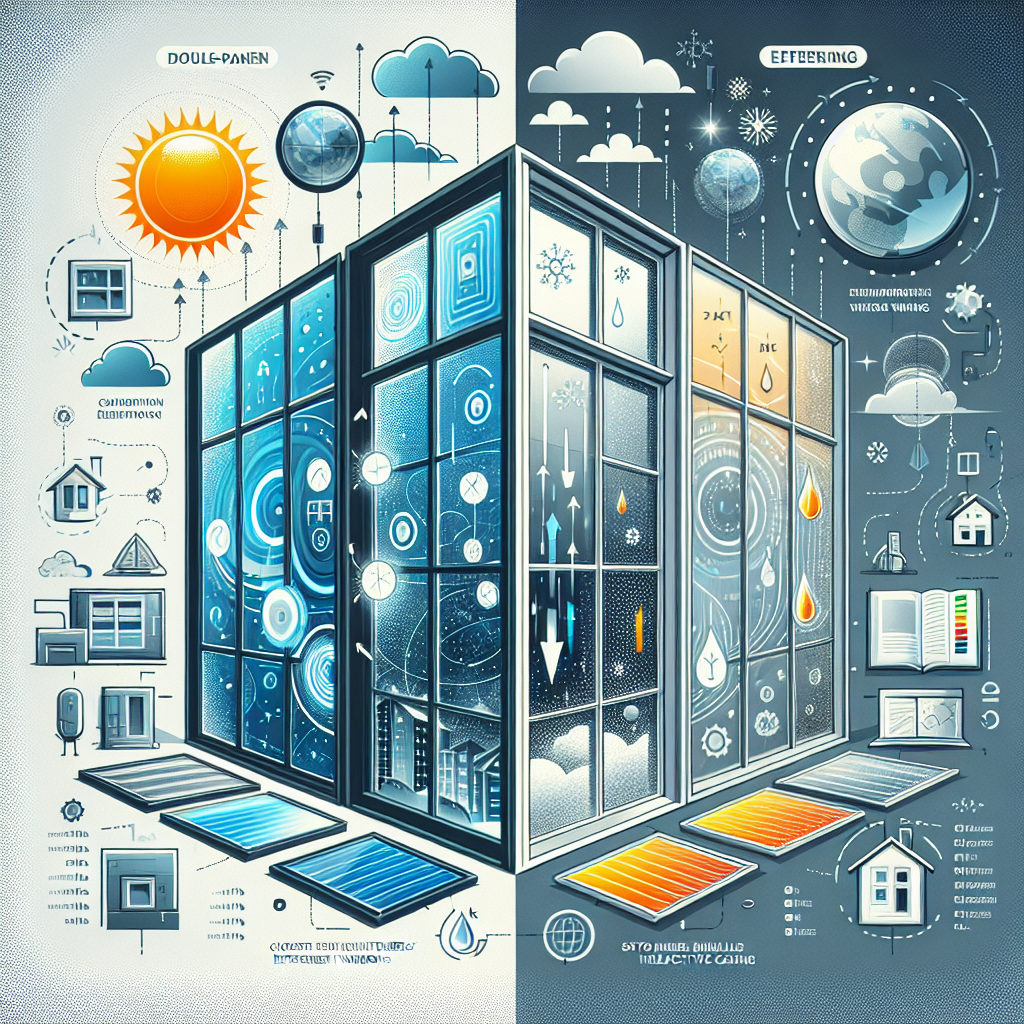When it comes to home improvement, one of the most impactful upgrades you can make is installing energy-efficient windows. Not only do they enhance the aesthetic appeal of your home, but they also significantly reduce energy costs and promote a more sustainable environment. In this article, we’ll delve into the various types of energy-efficient windows available on the market, providing a comparative analysis to help you make an informed decision.
Why Choose Energy-Efficient Windows?
Before we jump into the comparisons, it’s important to understand why energy-efficient windows are worth the investment. Traditional windows can lead to significant heat loss during winter and heat gain during summer, causing your heating and air conditioning systems to work overtime. This not only increases your energy bills but also contributes to a larger carbon footprint.
Energy-efficient windows mitigate these issues by featuring advanced technologies that improve insulation and light filtration, leading to a comfortable indoor environment and reduced energy expenditures.
The Various Types of Energy-Efficient Windows
1. Double-Pane Windows
Overview:
Double-pane windows consist of two layers of glass with a space in between that is filled with inert gas, commonly argon or krypton. This design provides excellent insulation, reducing heat transfer.
Pros:
- Better insulation than single-pane windows
- Reduced energy bills
- Noise reduction
- Condensation control
Cons:
- Higher upfront cost compared to single-pane windows
- More weight, requiring robust frames
2. Triple-Pane Windows
Overview:
Triple-pane windows take insulation a step further by adding a third layer of glass, further reducing heat flow. They are ideal for extreme climates where temperature fluctuations are common.
Pros:
- Exceptional insulation
- Superior noise reduction
- Potential tax rebates on energy-efficient upgrades
Cons:
- Higher cost than double-pane windows
- Heavier, may require additional framing
3. Low-E Windows
Overview:
Low-E (low emissivity) windows have a special coating that reflects infrared energy while allowing visible light in. They help keep your home warm in winter and cool in summer by minimizing heat transfer.
Pros:
- Energy-efficient year-round
- Blocks harmful UV rays, protecting furniture and carpets
- Available as single, double, or triple-pane options
Cons:
- Higher initial cost can deter some homeowners
- Requires professional installation for maximum benefit
4. Vinyl Windows
Overview:
Vinyl windows are made from polyvinyl chloride (PVC) and are known for their durability and low maintenance. They can be found with various frame designs and window styles.
Pros:
- Durable and resistant to weather conditions
- Low maintenance—no painting required
- Good energy performance
Cons:
- Limited customization in colors compared to wood
- Not as environmentally friendly during the manufacturing process
5. Wood Windows
Overview:
Wood windows offer a classic look and can significantly improve a home’s energy efficiency when properly insulated and treated. They are often favored in historic homes for their aesthetic appeal.
Pros:
- Excellent insulation properties
- Customizable in terms of finish and style
- Eco-friendly if sourced from sustainable forests
Cons:
- Higher maintenance requirements
- Subject to rot and warping
Analyzing the Energy Efficiency of Each Option
When evaluating the energy efficiency of these window types, the U-factor (which measures the rate of heat transfer) and the Solar Heat Gain Coefficient (SHGC) are key factors to consider. Lower U-factors indicate better insulation, while a lower SHGC means less heat is transmitted through the window, making a more comfortable indoor environment.
Energy Star Ratings
Looking for windows with an Energy Star label can significantly aid your decision-making process. These windows meet strict guidelines set by the U.S. Environmental Protection Agency and can provide substantial savings on energy bills. Be sure to check whether the windows are suited for your climate zone.
Conclusion: Making Your Choice
Choosing the right energy-efficient windows is crucial for improving your home’s comfort while reducing energy costs. Consider factors such as installation costs, climate conditions, aesthetics, and efficiency ratings when making your selection. Remember, investing in quality windows is not just an expense but a long-term investment that pays off in energy savings and added home value.
No matter which option you choose, upgrading to energy-efficient windows will make a notable difference in your home’s comfort level and your wallet. So, take the plunge and invest in a greener, more efficient future!
By understanding the nuances of each window type, you are better equipped to make a well-informed choice that best suits your needs. Don’t hesitate to consult with professionals to guide you along the way, ensuring you select the perfect energy-efficient solution for your home.


